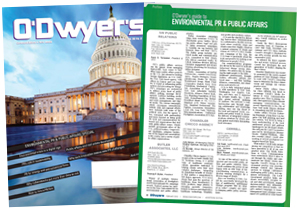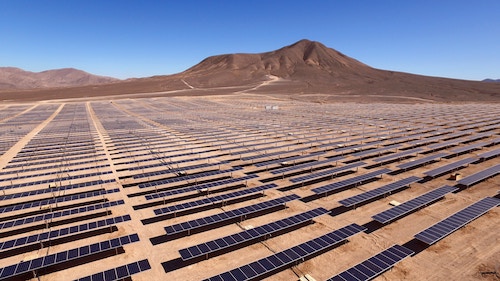 John Krisiukenas John Krisiukenas |
|
|
Remarkably enough, the year was 1990. I’m not sure a trend is supposed to take nearly 30 years to come to fruition. Sustainability efforts have taken a long time to finally make it into the mainstream consciousness, for several reasons.
Many business leaders at the beginning of the 21st Century still subscribed to Milton Friedman’s dismissal of any business with a “social conscience” as “unadulterated socialism,” and believed that businesses’ responsibility is to their shareholders. It is a very different sentiment from President Kennedy’s eloquent quote that “Our most basic common link is that we all inhabit this planet. We all breathe the same air. We all cherish our children’s future. And we are all mortal.”
For decades, sustainability has been seen as a somewhat adversarial forum, with the adage of “doing good while doing well” being just that, an adage. However, when you now look at the corporate landscape you can see a sizable shift has occurred.
As Freya Williams states in her book “Green Giants,” some of the most respected billion dollar companies have gotten there from a business plan of sustainability and social good. Companies from all sectors have been integrating an authentic wider purpose into their brand believing it is a source of competitive advantage which, in turn, will lead to long-term profitability.
PR leads the charge
As an industry, sustainability marketing is one of the best things to happen to public relations, as its overall goal is one that is perfectly aligned with public relations as a whole. Sustainability marketing is about delivering greater value to customers and ensuring that your brand remains viable over time — all actions supported and enhanced by vibrant public relations campaigns.
For PR practitioners, focusing on sustainability can launch more substantive roles with companies and clients. It elevates traditional PR functions and puts the communications expert squarely in areas of C-suite-level operational change and long-term risk management.
The line between sustainability marketing and public relations has blurred with the rise of social media and mobile devices. The first step in building an integrated brand-building campaign is to craft an effective and powerful communications plan, allowing communications professionals to take the lead in developing their client’s narrative. By doing this, PR draws a direct line between a targeted audience, a social purpose and their client, creating positive sales traction.
Providing connections to people, issues
From Pope Francis’ encyclical “Laudito Si,” which asks the world to reconsider how we treat each other and the world as a whole, to the historic COP21 meeting in Paris this past December where world leaders adopted a deal to cut carbon emissions, global issues are enormously becoming locally personal.
This is a climate where focused communications plans have a great effect. By tying into larger national and global issues, brands and organizations can communicate by bringing their message home.
WaterAid America communicates directly to those who have clean water and proper prenatal care to tell their story. Sarina Prabasi, CEO of WaterAid America says, “Pregnancy is a beautiful time in a women’s life and should not yield extreme concerns such as the risk of death. As we work towards providing women and children with access to safe water and sanitation, we invite others to join in our efforts.”
Keep America Beautiful has more than 600 community-based affiliates whose collective action champions environmentally healthy, socially connected and economically sound communities. “The ‘think globally, act locally’ adage is more than a rallying cry for Keep America Beautiful. It’s embedded in our DNA,” said Mike Rosen SVP, Marketing & Communications. “The mission of Keep America Beautiful is to inspire and educate people to take action every day to improve and beautify their community environment. Over the past 18 months, we’ve been working with our affiliates on the ongoing evolution of Keep America Beautiful as we roll out updated vision, mission and values and sharpen our message around three key pillars, to end littering in America, improve recycling in America, and beautify America’s communities.”
Will Millennials save the world?
It is hard to believe Millennials may be the key to saving the planet, because they are … well, Millennials. However, they have done more than my beloved Generation X in demanding more environmentally and socially sound products. The millennial consumer has been empowered by new technologies and is now coming of age economically. They are a force to reckon with, as they become a larger part of the economy, estimated at half the global workforce by 2020.
“The commitment of many Millennials towards environmental and social issues has certainly helped fortify our efforts and sharpen our message, while giving us a strong base of peer ambassadors to help reach the next generation of community stewards,” said Rosen. “They have also played an important role in social marketing as we have seen purposeful engagement on our Facebook, Instagram, Twitter and Tumblr channels.”
Sustainability has moved past merely being a trend — it’s becoming a cultural shift. All organizations, therefore, will need to realize that sustainability is not just a desired activity but a necessary strategy specifically when developing integrated communication campaigns.
* * *
John Krisiukenas is Managing Director out of the Marketing Maven New York office.



 A focus on all the ways that greenhouse gases are created, not just from fossil fuels, marks the evolution from clean energy and clean tech to climate tech, according to Melissa Mahoney from V2 Communications.
A focus on all the ways that greenhouse gases are created, not just from fossil fuels, marks the evolution from clean energy and clean tech to climate tech, according to Melissa Mahoney from V2 Communications. Kristin Wilson-Palmer, who has been a senior VP in Edelman’s Washington, DC office since 2021, joins the Natural Resources Defense Council as chief communications officer.
Kristin Wilson-Palmer, who has been a senior VP in Edelman’s Washington, DC office since 2021, joins the Natural Resources Defense Council as chief communications officer. Educating the next generation to the facts and science surrounding the climate crisis.
Educating the next generation to the facts and science surrounding the climate crisis. Melanie Janin, who was executive VP at Weber Shandwick, has joined Conservation International as chief communications & marketing officer.
Melanie Janin, who was executive VP at Weber Shandwick, has joined Conservation International as chief communications & marketing officer.



 Have a comment? Send it to
Have a comment? Send it to 
No comments have been submitted for this story yet.